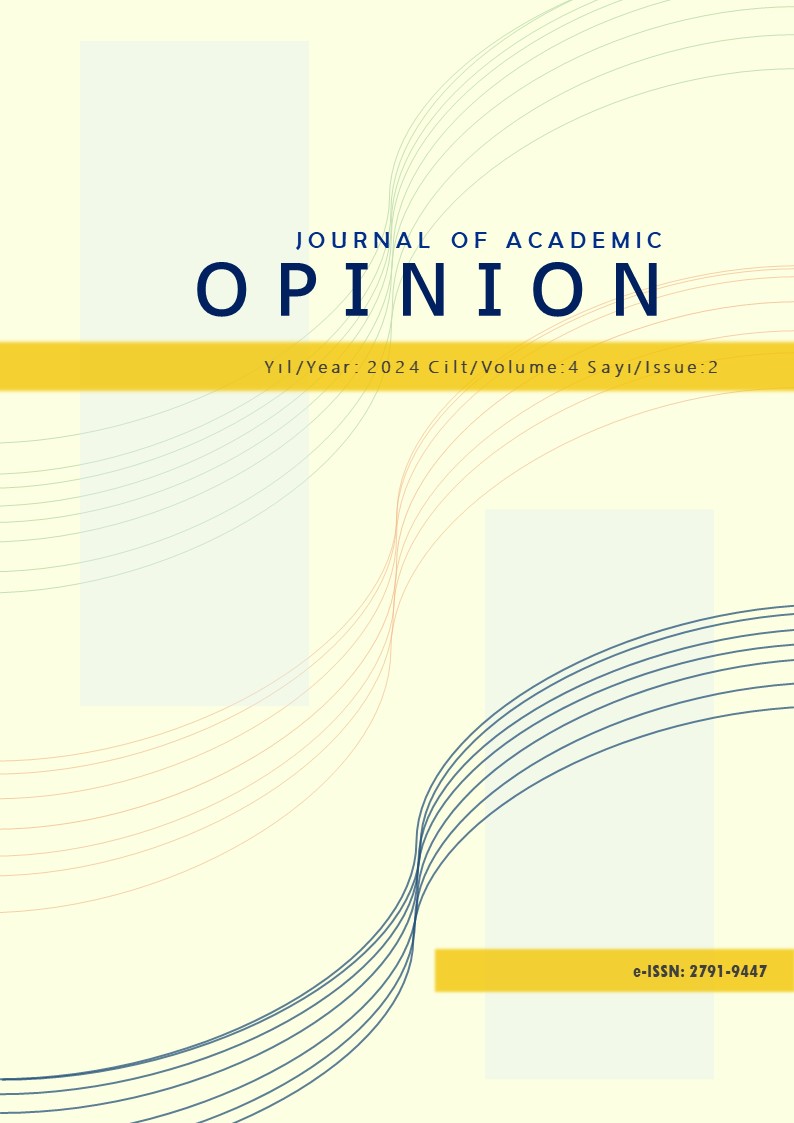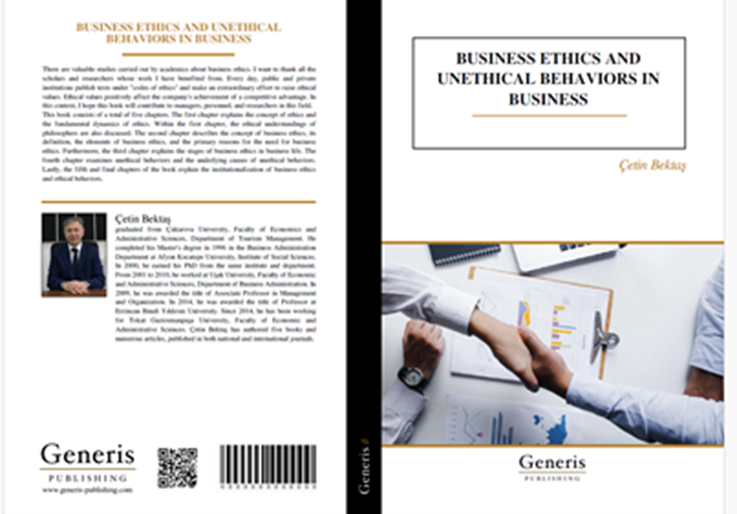Türkiye Ekonomisinde Döviz Kurunun Geçiş Etkisi: 2009-2023 Dönemi İçin Bir Zaman Serisi Analizi
Anahtar Kelimeler:
Döviz Kuru Geçiş Etkisi, Tüketici Fiyat Endeksi, Zaman Serisi AnaliziÖzet
Bu çalışma, 2009:01 ile 2023:11 dönemini kapsayan aylık veriler kullanılarak, Türkiye ekonomisinde döviz kurunun Tüketici Fiyat Endeksi (TÜFE) ve Üretici Fiyat Endeksi (ÜFE) üzerindeki geçiş etkisini (DKGE) incelemektedir. Analizde, döviz kurundaki değişimlerin yurt içi fiyatlar üzerindeki etkilerini belirlemek amacıyla RALS yöntemleri kullanılmıştır. Elde edilen bulgular, döviz kurunun hem TÜFE hem de ÜFE üzerinde anlamlı ve güçlü bir etkiye sahip olduğunu göstermektedir. Döviz kurundaki %1'lik bir artışın, TÜFE'yi %0,71 ve ÜFE'yi %1,13 oranında artırdığı tespit edilmiştir. Ayrıca, petrol fiyatlarının hem tüketici hem de üretici fiyatları üzerinde önemli bir etkisi olduğu belirlenmiştir. Çıktı açığı değişkeninin ise her iki fiyat endeksi üzerinde negatif fakat nispi olarak önemsiz bir etkisi olduğu sonucuna varılmıştır. Bu bulgular, döviz kurundaki dalgalanmaların Türkiye ekonomisinde fiyat istikrarı üzerinde önemli etkiler oluşturduğunu ve döviz kuru istikrarının sağlanmasının kritik öneme sahip olduğunu göstermektedir. Politika yapıcılar, döviz kuru dalgalanmalarının yurt içi fiyatlar üzerindeki olumsuz etkilerini azaltmak amacıyla daha etkin ve koordineli döviz kuru politikaları geliştirmelidir. Ayrıca, enerji maliyetlerinin enflasyon üzerindeki etkisini minimize etmek için alternatif enerji kaynaklarına yatırım yapılması ve enerji verimliliğinin artırılması önerilmektedir.
Referanslar
Aisen, A., Manguinhane, E., and Simione, F. F. (2021). An Empirical Assessment of The Exchange Rate Pass-Through in Mozambique. IMF Working Paper: WP/21/132, 1-32, doi:10.5089/9781513573694.001
Akbay Arama, Z., Bekdaş, G., Işıkdağ, Ü., Hepsağ, A., and Yücel, M. (2022). The Application of Residual Augmented Least Squares Method to Predict The Consistency Properties of Special Clayey Soils. Arabian Journal of Geosciences, 15(5), 436. doi.org/10.1007/s12517-022-09715-x
Akgünduz, Y. E., Baştan, E. M., Demiroğlu, U., and Tümen, S. (2019). Product‐Level Estimates of Exchange Rate Pass‐Through: Evidence From Turkey. The World Economy, 44(7):2203-2226. doi:10.1111/twec.13060
Alptekin, V., Yılmaz, K. Ç., and Taş, T. (2016). Döviz Kurundan Fiyatlara Geçiş Etkisi: Türkiye Örneği. Selçuk Üniversitesi Sosyal Bilimler Enstitüsü Dergisi, (35): 1-9.
Anh, V. T., Quan, L. T. T., Phuc, N. V., Chi, H. M., and Duc, V. H. (2021). Exchange Rate Pass-Through in ASEAN Countries: An Application of the SVAR Model. Emerging Markets Finance and Trade, 57(1): 21-34. doi:1080/1540496X.2018.1474737
Asfuroğlu, D., Ertuğrul, A., and Güneş, G. Ş. (2023). Are Inflatıon Expectatıons Irratıonal In Turkey? Exchange Rate Pass-Through Analysıs. Journal of Financial Politic & Economic Reviews/Finans Politik & Ekonomik Yorumlar, 60(665).
Berk, E.ve Yanar, R. (2023). Döviz Kurundaki Değişimlerin Yurtiçi Üretici ve Tüketici Fiyatlarına Geçiş Etkisi: Türkiye Üzerine Bir Uygulama. Gaziantep University Journal of Social Sciences, 22(1): 223-238. doi:10.21547/jss.1187052
Campa, J. M., and Goldberg, L. S. (2002). Exchange Rate Pass-Through into Import Prices. NBER Working Paper No.8934, 1-33. https://www.nber.org/system/files/working_papers/w8934/w8934.pdf/
Erişim Tarihi (06.08.2024).
Demirel, B., Alpaslan, B., and Bozdağ, E. G. (2014). Do Exchange Rates Affect Inflation? Evidence from Emerging Market Economies. Ege Academic Review, 9(2): 1-8.
Enders, W. (2014). Applied Econometric Time Series. John Wiley & Sons.
Erdem, H. F. ve Yamak, N. (2016). Döviz Kurunun Fiyatlar Genel Düzeyi Üzerindeki Geçişkenlik Etkisi: Gecikmesi Dağıtılmış Yaklaşım. KAÜİİBFD, 7(13): 303-322.
Goldberg, L. S., and Hellerstein, R. (2008). A Structural Approach to Explaining Incomplete Exchange-Rate Pass-Through and Pricing-to-Market. American Economic Review, 98(2):423-429. doi: 10.1257/aer.98.2.423
Göktaş, P. (2019). Türkiye’de Döviz Kurunun Tüketici Fiyatları Üzerindeki Asimetrik Geçiş Etkileri. Sosyoekonomi, 27(42):29-50. doi:10.17233/sosyoekonomi.2019.04.02
Ha, J., Stocker, M. M., and Yilmazkuday, H. (2020). Inflation And Exchange Rate Pass-Through. Journal of International Money and Finance, 105, 102187. doi:10.1016/j.jimonfin.2020.102187
Helmy, O., Fayed, M., and Hussien, K. (2018). Exchange Rate Pass-Through to Inflation in Egypt: A Structural VAR Approach. Review Of Economics And Political Science, 3(2): 2-19. doi:10.1108/REPS-07-2018-001
Hepsağ, A. (2022). Ekonometrik Zaman Serileri Analizlerinde Güncel Yöntemler (WinRats Uygulamalı). İstanbul: Der Yayınları.
Ilhan, A., Akdeniz, C., and Özdemir, M. (2023). Time-Varying Exchange Rate Pass-Through to Domestic Prices: Evidence from Turkey. Romanian Journal of Economic Forecasting, 26(3): 162-182.
Jimborean, R. (2013). The Exchange Rate Pass-Through in the New EU Member States. Economic Systems, 37(2): 302-329. doi:10.1016/j.ecosys.2012.08.006
Kara, H., and Sarıkaya, Ç. (2021). Enflasyon Dinamiklerindeki Değişim: Döviz Kuru Geçişkenliği Güçleniyor mu? Koc University Tusiad Economic Research Forum Working Paper Series (No. 2121). https://eaf.ku.edu.tr/wp-content/uploads/2021/11/erf_wp_2121.pdf Erişim Tarihi (11.08.2024).
Kara, H., Tuger, H. K., Özlale, U., Tuger, B., Yavuz, D., and Yucel, E. M. (2005). Exchange Rate Pass-Through in Turkey: Has it Changed And To What Extent?. Merkez Bankası Yayınları (No. 0504). https://www.tcmb.gov.tr/wps/wcm/connect/EN/TCMB+EN/Main+Menu/Publications/Research/Working+Paperss/2005/05-04 Erişim Tarihi (25.07.2024).
Kotil, E. (2020). Exchange Rate Pass-Through Investigation For Turkish Economy. Frontiers in Applied Mathematics and Statistics, 5: 66. doi:10.3389/fams.2019.00066
Kwon, J., and Shin, W. (2023). Nonlinear Exchange Rate Pass-Through and Monetary Policy Credibility: Evidence From Korea. Economics Letters, 230: 111234. doi:10.1016/j.econlet.2023.111234
McCarthy, J. (2007). Pass-Through of Exchange Rates And Import Prices to Domestic Inflation in Some Industrialized Economies. Eastern Economic Journal, 33(4): 511-537. doi:10.1057/eej.2007.38
Meng, M., Lee, J., and Payne, J. E. (2017). RALS-LM Unit Root Test With Trend Breaks and Non-Normal Errors: Application to The Prebisch-Singer Hypothesis. Studies in Nonlinear Dynamics & Econometrics, 21(1): 31-45. doi:10.1515/snde-2016-0050
Menon, J. (1995). Exchange Rate Pass‐Through. Journal of Economic Surveys, 9(2): 197-231.
Mert, M., and Cağlar, A. E. (2019). Eviews ve Gauss Uygulamalı Zaman Serileri Analizi. Ankara: Detay Yayıncılık.
Osbat, C., Sun, Y., and Wagner, M. (2021). Sectoral Exchange Rate Pass-Through in The Euro Area. European Central Bank Working Paper Series no:2634, 1-40. doi:10.2866/102470
Özata, E. (2019). Türkiye’de Döviz Kuru Geçişkenliğinin Asimetrik Analizi. Eskişehir Osmangazi Üniversitesi Sosyal Bilimler Dergisi, 20(2): 213-232. doi:10.17494/ogusbd.672820
Özdamar, G. (2015). Türkiye Ekonomisinde Döviz Kuru Geçiş Etkisi: ARDL-Sınır Testi Yaklaşımı Bulguları. Akdeniz İİBF Dergisi, 15(32): 66-97.
Özkan, I., and Erden, L. (2015). Time-Varying Nature and Macroeconomic Determinants of Exchange Rate Pass-Through. International Review of Economics & Finance, 38: 56-66. doi:10.1016/j.iref.2015.01.007
Pham, T. A. T., Nguyen, T. T., Nasir, M. A., and Huynh, T. L. D. (2023). Exchange Rate Pass-Through: A Comparative Analysis of Inflation Targeting & Non-Targeting ASEAN-5 Countries. The Quarterly Review of Economics and Finance, 87: 158-167. doi:10.1016/j.qref.2020.07.010
Phillips, P. C., and Hansen, B. E. (1990). Statistical Inference in Instrumental Variables Regression with I (1) Processes. The Review of Economic Studies, 57(1): 99-125. doi:10.2307/2297545
Phuc, N. V., and Duc, V. H. (2019). Macroeconomics Determinants of Exchange Rate Pass-Through: New Evidence From The Asia-Pacific Region. Emerging Markets Finance and Trade, 57(1): 5-20. doi:10.1080/1540496X.2018.1534682
Salihoğlu, E., and Batır, T. E. (2022). The Sectoral Impact of Covıd-19 Using Rals-LM Tests: Evidence From Borsa Istanbul Turkıye. Journal of Financial Politic & Economic Reviews/Finans Politik & Ekonomik Yorumlar, 59(662): 107-127.
Stock, J. H., and Watson, M. W. (1993). A Simple Estimator of Cointegrating Vectors in Higher Order İntegrated Systems. Econometrica: Journal of the Econometric Society, 61(4): 783-820.
Stock, J. H., and Watson, M. W. (2020). Introduction to Econometrics 4th ed. Birleşik Krallık: Pearson.
Şenses, F. (2021). İktisada (Farklı Bir) Giriş: Giriş İktisadı Öğrencileri ve İktisada İlgi Duyanlar için Yardımcı Kitap. (Vol. 413). İstanbul: İletişim Yayınları.
Taylor, J. B. (2000). Low Inflation, Pass-Through, and the Pricing Power of Firms. European Economic Review, 44(7): 1389-1408. doi:10.1016/S0014-2921(00)00037-4
Turgut, E., ve Uçan, O. (2021). Döviz Kurunun Yurtiçi Fiyatlara Geçisi: Türkiye Örneği. Hitit Sosyal Bilimler Dergisi, 14(1): 124-143. doi: 10.17218/hititsbd.880510
Woolridge, J. M. (2016). Introductory Econometrics: A Modern Approach. Boston: Cengage Learning.
İndir
Yayınlanmış
Nasıl Atıf Yapılır
Sayı
Bölüm
Lisans
Telif Hakkı (c) 2024 Journal of Academic Opinion

Bu çalışma Creative Commons Attribution 4.0 International License ile lisanslanmıştır.





